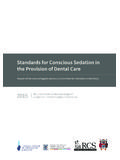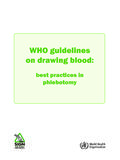Transcription of Natoal Clcal rograe Surgery - Royal College of …
1 National Clinical Programme in SurgeryModel of care for Acute Surgery Model of care for Acute Surgery National Clinical Programme in Surgery Model of care for Acute Surgery 2013 2 | P a g e Forward The National Clinical Programme in Surgery is delighted to publish the Acute Surgery Model of care . The aim of the Surgery Programme is to provide a framework for the delivery of more timely, accessible, safer, cost effective and efficient care for the acute surgical patient. This follows on from the Elective Surgery Model of care which is currently being rolled out across ireland . While understanding the difficulties facing healthcare delivery at the present time, we believe that the principles laid out in this document represent best practice that will, in the long term, fundamentally improve surgical care .
2 Change of this magnitude will clearly take time to implement and will impact all care providers and the organisations within which they work. We also acknowledge that the patient care that is provided by surgeons and anaesthetists cannot be delivered without the support of a wide range of other professional and ancillary groups. Finally, we welcome the collaboration with the other programmes charged with the delivery of acute patient care . This final document could not have been completed without the widespread input and suggestions that we have received from our own team, the surgical and healthcare community as well as patients themselves. We would like to express our sincere gratitude and appreciation to one and all.
3 Professor Frank Keane, Joint Lead Mr Ken Mealy, Joint Lead National Clinical Programme in Surgery National Clinical Programme in Surgery Model of care for Acute Surgery 2013 3 | P a g e Table of Contents Forward .. 1 Executive Summary .. 6 Glossary of Terms .. 8 Background and Objectives .. 10 Scope of the Document .. 12 Surgical Activity and Bed Occupancy Acute and Elective .. 16 Introduction .. 16 Methodology .. 17 Results .. 17 Discussion .. 30 The Way Forward .. 34 Core Principles .. 35 Quality Assured Acute Surgical 35 Standards of care for Acute 35 Knowing the Risk .. 36 Communicating with Patients.
4 37 Consent and Patient Safety .. 37 Consultant-delivered Service .. 38 Recognition of Acute vs. Elective Pathways .. 39 Networked Solutions .. 42 Hospital 42 Hospital Models .. 43 Strategies .. 45 Efficient Patient Flow - Access & Discharge .. 45 Importance of Access and Facilities .. 45 Acute Surgical Assessment Units (ASAUs) .. 46 Diagnostic Services .. 50 Designated Theatres .. 51 Manpower/Resource Optimisation .. 52 The Surgical Team .. 52 The Need for Innovative Roles .. 54 Efficient use of Resources .. 56 Model of care for Acute Surgery 2013 4 | P a g e Capacity Planning .. 57 Predicting Flows into Unscheduled Surgical care .. 57 Critical care Capacity Planning.
5 62 Discharge Planning .. 62 Acute Surgical Inpatients who do not have a surgical procedure .. 63 Key Performance Indicators .. 65 Data, Outcomes and Quality Indicators .. 65 Audit (IASM, INOR and Critical care audit) .. 66 Key Considerations .. 69 Governance .. 69 Surgical Specialties Their Role in Acute care .. 71 Integration with other Stakeholders & Clinical Programmes .. 72 Acute Medicine Programme .. 72 Emergency Medicine Programme .. 73 Transport Medicine Programme .. 74 Critical care Programme .. 76 National Cancer Control Programme .. 78 Information and Communication Technology support (ICT) .. 79 Trauma .. 79 Paediatric Surgery .. 81 Standards for Acute Surgical 85 Generic Standards for Acute Surgical care .
6 86 Surgical Specialty Standards for Acute Surgical care .. 90 Cardiothoracic Surgery .. 90 General Surgery .. 91 Neurosurgery .. 94 Oral and Maxillofacial Surgery (OMFS) .. 95 Otorhinolaryngology .. 95 Paediatric Surgery .. 96 Plastic Surgery .. 97 Trauma and Orthopaedic Surgery .. 99 Urology .. 101 References .. 102 Appendices .. 110 Model of care for Acute Surgery 2013 5 | P a g e Appendix 1 Methodology for Surgical Activity and Bed Occupancy - Acute & Elective .. 110 Appendix 2 Guiding Principles for Quality and Safety .. 115 Appendix 3 Examples of Conditions that Require Urgent Operative Management .. 118 Acknowledgments .. 122 Model of care for Acute Surgery 2013 6 | P a g e Executive Summary 1.
7 Acute surgical care to patients in ireland should be organised and delivered to a high quality, safe, uniform and cost effective standard. 2. Planning is difficult in the absence of sufficient data to demonstrate the variation between surgical specialties and their outcomes, the complexities of Surgery and anaesthesia that need to be met, as well as the demand on critical independencies and resources required. This needs to be further addressed. 3. The efficient delivery of acute Surgery requires it to be as functionally separate as possible from elective Surgery and it should not be diminished as a priority in the face of the implementation of the Elective Surgery component of the Surgery Programme.
8 4. Acute surgical patients should be risk assessed, monitored and prioritised according to their clinical need and be managed appropriately and expeditiously through focused care pathways. These will provide better and safer care for patients as well as better training for surgical teams. 5. Acute surgical care should be consultant-delivered, providing a leadership hub for the clinical team consisting of trainees, nurses, allied health professionals and others who have the appropriate competencies and who are dedicated, at that time, to this specific role. 6. Hospitals receiving acute surgical patients are being organised within designated Groups or networks. These are laid out to ensure appropriate streaming of patients to the correct part of the service, avoiding duplication of assessment and of documentation.
9 1 7. The establishment and rationalisation of Hospital Groups within coherent geographical boundaries, under a single governance structure will be a key requirement for the delivery of acute surgical care within ireland s present capacity and resources. 8. The management of unscheduled surgical care requires clear process, risk assessment and clinical care pathways involving dedicated staff and teams and the utilisation of such modalities as acute surgical admission/assessment units(ASAU s) and, where appropriate, dedicated operating theatres. 9. Allocation of operating theatres should be matched to the emergency Surgery workload and managed by good theatre governance as well as dedicated anaesthesia and surgical leadership.
10 10. Consultant work patterns in acute surgical care should aim to be exclusive of other activities during the time that they are providing acute surgical care . 11. Critical clinical interdependencies such as rapid access to diagnostic services must be part of the process that supports the management of acute surgical patients. Model of care for Acute Surgery 2013 7 | P a g e 12. There is an urgent need to specifically address the delivery of Trauma and Acute Paediatric surgical care . 13. Capacity planning must be used to predict and plan for flows of both acute and elective surgical patients as well as high risk, critical care patients and all hospital clinical services.








